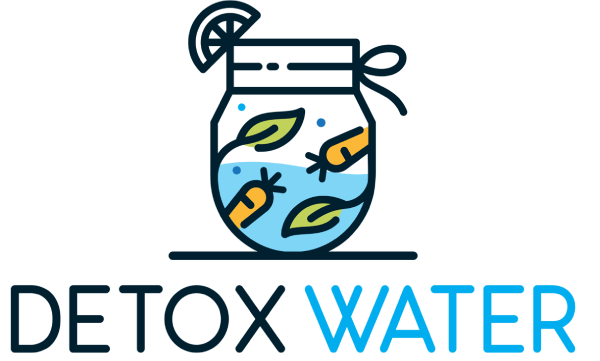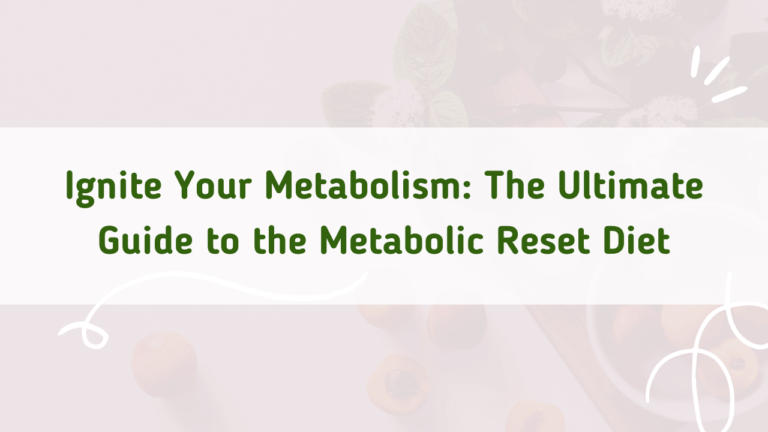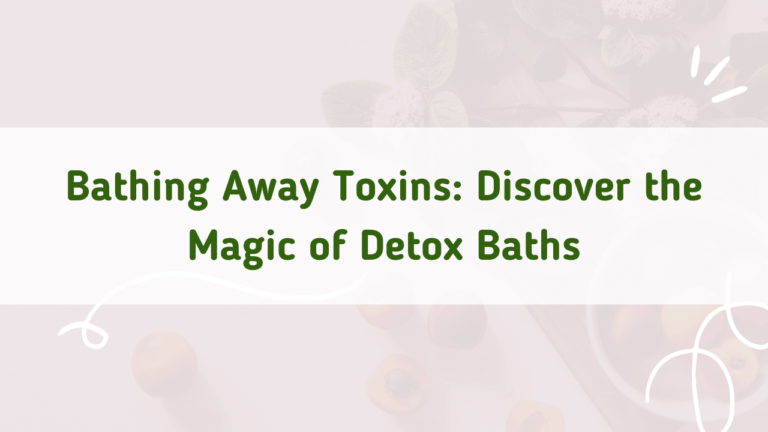An Essential Guide to Heavy Metal Detox for Kids

When it comes to our little ones, ‘heavy metal’ should only refer to a genre of music they might bang their heads to when they’re older.
Sadly, it can also indicate a serious health concern—heavy metal toxicity—when too many bad guys like lead, mercury, or arsenic sneak into the body, affecting its ability to function correctly.
It’s high time we nodded to the gravity of heavy metal detoxification in our kids.
If swept under the rug, this could trigger nasty complications like damage to their nervous and immune systems, behavioral flip-flops, and in some extreme cases, even pave the way for conditions like autism spectrum disorder.
The World Health Organization even places these heavy metal baddies in their top ten list of public health threats. Let’s take a closer look.
Contents
Symptoms of Heavy Metal Toxicity in Children
Heavy metal toxicity can affect multiple systems in the body, and the symptoms can vary depending on the type of heavy metal involved, the duration of exposure, and the child’s overall health status. Here are the symptoms categorized by the affected system:
Nervous System
Heavy metals—especially the nasty duo, lead and mercury—are neurotoxic. That means they wreak havoc on the nervous system and can stir up a host of neurological and behavioral symptoms. These can include:
- Developmental Delays: Kids exposed to heavy metals might be slightly behind in their physical, cognitive, or social development. This might look like struggles with speech, motor skills, or socializing.
- Behavioral Changes: Anything from hyperactivity and aggression to pulling back socially and mood swings. There’s some chatter linking heavy metal exposure and conditions like Attention Deficit Hyperactivity Disorder (ADHD) and Autism Spectrum Disorder (ASD), though the jury’s still out, and more research is needed.
- Cognitive Impairment: Heavy metals can wrench a child’s thinking, learning, and problem-solving ability. Lower IQ and learning difficulties could be the unwanted gifts from heavy metal exposure.
Digestive System
Heavy metals don’t play nice with the digestive system, which could lead to unpleasant symptoms such as:
- Nausea and Vomiting: The classics, and often the first signs of heavy metal poisoning.
- Belly Pain and Cramps: Heavy metals could tick off the lining of the stomach and intestines, triggering some tummy trouble.
- Changes in Appetite or Weight: Heavy metal toxicity could hit appetite, cause weight loss, or, in some cases, unexpected weight gain.
Skin, Hair, and Nails
The effects of heavy metals aren’t just skin-deep. They can meddle with the skin, hair, and nails, causing symptoms like:
- Skin Rashes: This could be the skin shaking hands with heavy metals or a full-body response to the toxicity.
- Hair and Nail Changes: Heavy metals can butt into the growth and quality of hair and nails, leading to hair loss, brittle nails, or shifts in hair or nail color.
General Symptoms
Some symptoms of heavy metal toxicity play a brilliant game of disguise and could be mistaken for other common childhood illnesses. These include:
- Feeling Worn-out and Weak: Heavy metals can disrupt the goings-on at the cellular level, causing low energy and muscle weakness.
- Headaches could be the handiwork of heavy metals messing with the nervous system or the body’s overall reaction to the toxicity.
Familiar Sources of Heavy Metal Exposure in Children
Contaminated Water and Food
Little do we realize, but sometimes danger lurks in our water supplies.
Pollution from industrial waste, agricultural overflow, or crumbling water infrastructure could sneak heavy metals into the life-giving fluid we so casually consume.
When this tainted water is used for hydration or watering crops, it may pose a risk to our precious youngsters, exposing them to harmful heavy metals.
Take the lead, for instance. This sneaky heavy metal could creep into your drinking water courtesy of corrosion in old pipes and plumbing fixtures laden with lead.
Swallowed down, lead can meddle with your kiddo’s nervous system development, sparking cognitive and behavioral issues.
And food? Crops could absorb heavy metals from contaminated soil, or animals might ingest these metals through contaminated feed or water.
Did you know that fish can hoard methylmercury, a toxic organic compound, in their tissues from contaminated water bodies? Yep, and it poses a risk to us when we relish that pan-seared salmon!
Processed Food
Processed food, too, could be a silent carrier of heavy metals.
The FDA discovered trace levels of baddies like lead, arsenic, and cadmium in everything from baby food to your kid’s favorite snacks.
The source? It could be the ingredients, the packaging, or the manufacturing process.
Regular munching on these foods might mean more heavy metals entering your little one’s system.
Household Items
Surprisingly, our cozy homes might also harbor hidden risks. Certain paints, toys, and electronics could expose our children to heavy metals.
Older homes might still sport lead-based paint, which, when chipping away, spews out dust that kids can inhale or ingest.
Imported toys, particularly from countries with lax safety regulations, may harbor lead or other heavy metals.
And what about electronics? They might contain heavy metals like lead, mercury, or cadmium.
Picture your kid playing with these toys or gadgets, then casually popping their fingers into their mouths or touching food. Yikes!
Environmental Pollution
Industrial operations such as mining and smelting spew heavy metals into our air, soil, and water.
Kiddos might inhale these metals, munch on contaminated soil or food, or touch contaminated soil or dust, unknowingly inviting them into their bodies.
And, believe it or not, even the fumes from older vehicles burning leaded gasoline are a considerable lead source.
A deep breath of this polluted air could mean an unwelcome dose of heavy metals.
Prenatal Exposure
Lastly, an often overlooked source of heavy metal exposure – prenatal exposure, which can significantly influence a child’s diet in their early years.
If an expecting mom gets exposed to heavy metals, they can cross the placental barrier and hoard in the developing baby.
This early exposure can significantly impact the child’s health, potentially leading to cognitive and developmental troubles.
Natural Ways to Detoxify Heavy Metals in Children
Healthy Diet
A healthy, balanced diet enhanced with vitamin and mineral supplements is at the top of the list for combating heavy metal toxins.
Believe it or not, some foods and food products are like undercover agents—scientifically proven to latch onto heavy metals and facilitate their expulsion from the body.
Enter green leafy vegetables and fermented foods. These superfoods come packed with fiber that binds to heavy metals in the gut, blocking their absorption and aiding their exit from the body.
Fermented foods are like a cheerleading squad for gut-friendly bacteria, which double up on the detoxification process.
And let’s not forget foods brimming with antioxidants—think berries, nuts, and seeds. These goodies wage war against the oxidative stress induced by heavy metals, thus backing the body’s detox endeavors.
Hydration
Water—is simple, essential, and massively underappreciated. Keeping the hydration game strong is key to maintaining overall health and powering the body’s detox processes.
Think of water as a river, flushing out the pesky toxins via the kidneys, skin, and digestive system.
And, of course, double-check the water source to ensure it’s clean and heavy metal-free.
Herbs and Supplements
Certain herbs and supplements are like supercharged allies in the fight against heavy metal toxicity:
- Cilantro and Chlorella: These two have been seen moonlighting in studies, showing off their ability to bind to heavy metals in the body and usher them out.
- Mineral Supplements: Some minerals aren’t just good for the body—they’re tactical. Zinc, iron, and calcium supplements can defend against heavy metals like lead and cadmium by occupying the same absorption sites in the gut.
- Lipoic Acid: This antioxidant has a special knack for replenishing other antioxidants like vitamins C and E, which often find themselves short-staffed due to heavy metal toxicity.
Lifestyle Changes
Heavy metal detox, a concept often associated with the pervasive diet culture, isn’t just about what goes into the body—it’s also about what’s around it. Here’s how to minimize a child’s heavy metal exposure:
- Check (and replace, if needed) old plumbing and paint in your home.
- Ensure the kiddo’s toys and household items are free from heavy metals.
- Promote cleaner environments and back policies aimed at reducing industrial pollution.
Alternative Routes
While these methods need more research to prove their effectiveness, some advocates for alternative approaches like Epsom salt baths and infrared saunas for heavy metal detox.
- Epsom Salt Baths: Epsom salts are a good source of magnesium, believed to lend a helping hand in the body’s detox process and promote overall relaxation.
- Infrared Saunas: A school of thought believes infrared saunas stimulate the body’s sweat production, which could help evict toxins, including heavy metals. However, these should be used cautiously and always under medical supervision regarding children.
When to Seek Professional Help for Heavy Metal Detoxification in Children
Severe Symptoms of Heavy Metal Toxicity
Suppose your little one starts showing troubling signs of heavy metal toxicity like relentless fatigue, sharp behavioral shifts, persistent tummy troubles, or recurrent headaches. In that case, it’s time to ring the alarm bells and rush to a professional.
In such instances, their tiny bodies may not detoxify the heavy metals naturally at a pace that matches the exposure.
High Levels of Heavy Metals in Blood Tests
Routine check-ups and blood work are nifty tools for monitoring the heavy metal levels in your child’s system.
If blood tests wave a red flag, indicating elevated levels of heavy metals, you must book a medical professional pronto.
Sky-high levels of heavy metals can inflict immediate and long-term health blows on children, such as mental hiccups, developmental lags, and even organ damage.
Inability to Detoxify Naturally
While a balanced diet and active lifestyle can bolster the body’s natural detox capabilities, some cases might prove too stubborn, or the heavy metal exposure might be too intense.
If your little one’s symptoms continue to be a thorn in their side or worsen, despite the natural detox strategies, you’ll need to rope in professional medical aid.
In such cases, a healthcare professional may recommend treatments such as chelation therapy.
Chelation Therapy
Chelation therapy is a medical intervention that deploys chelating agents to flush out heavy metals from the body.
These chelating agents bind to heavy metals in the bloodstream, forming a compound that can be excreted in the pee.
While chelation therapy can be a game-changer in treating heavy metal poisoning, it doesn’t come without risks and side effects.
Hence, it’s generally reserved as a last resort when other detoxification strategies have hit a dead-end, and the heavy metals in the body pose immediate health threats.
Conclusion
While eliminating heavy metals from your child’s body is crucial to fend off heavy metal poisoning and give their immune system a fighting chance, it’s vital to tread this path responsibly.
Despite the scanty scientific evidence, a balanced diet, staying hydrated, and making specific lifestyle tweaks can aid your child’s body in its natural detox processes.
But remember, nothing beats the expertise of a healthcare professional for a safe and effective diagnosis and treatment of heavy metal toxicity in children.
FAQ
How can I detox my child naturally?
Start a detox by adding leafy greens, fiber, and foods rich in antioxidants to your diet. Ensure your little one is well-hydrated, limit their exposure to heavy metals, and consider safe supplements like cilantro or chlorella (with a doctor’s green light).
What is a safe detox for kids?
A safe detox means a healthy diet, hydration, reducing toxin exposure, and perhaps introducing safe supplements under a health professional’s watchful eye. Steer clear of intense detox routines and never forget the golden rule: consult a medical professional first.
Is zeolite detox safe for kids?
There isn’t enough scientific evidence to confirm the safety and efficacy of zeolite for detox in children. Always consult a healthcare provider before starting any new treatment or supplement for your child.
How do I detox my child from devices?
Bring in “device-free” windows during the day, nudge them towards outdoor activities, limit screen time, and encourage hobbies that don’t revolve around electronics.
Aim for a balanced relationship with technology—applauding its positive use while curbing potential drawbacks.

Rahul is a nutritionist and personal trainer with 3+ years of experience in the field of health coaching. He specializes in nutrition science, with a keen eye for how food choices, lifestyle habits, and physical activity impact our bodies.






